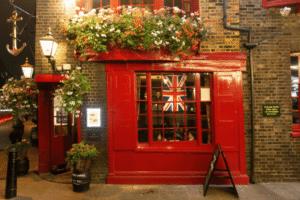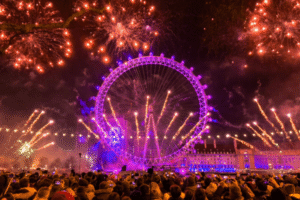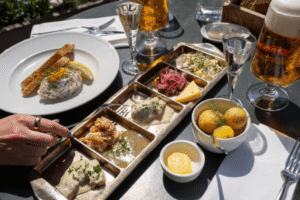Copenhagen in summer is a city full of color and life. The long, bright days and fresh Scandinavian air bring energy to every part of the capital, especially its gardens. From historic royal parks to quiet university grounds and lively city spaces, Copenhagen gardens offer a wide range of experiences.
These places are not only beautiful but also meaningful. They bring people together, create room for relaxation, and offer moments of calm in a busy city.
Whether you enjoy walking among blooming roses, sitting under old trees, or exploring floral displays with your family, the gardens of Copenhagen provide the perfect summer escape.
In this guide, you will discover seven of the best gardens and parks to visit during the warm season. Each one has its own style, history, and charm waiting to be explored.
Key Takeaways
- Copenhagen’s summer gardens offer vibrant blooms, peaceful retreats, and lively family-friendly parks.
- Top picks include Fælledparken (the city’s most visited park), Valbyparken’s themed flower gardens, and the historic Botanical Garden with its Butterfly House.
- Tivoli Gardens combines floral charm with amusement park fun, while Østre Anlæg and Landbohøjskolens Have provide quiet, artistic green spaces.
- Frederiksberg Garden offers romantic lakeside walks and royal history in a lush setting.
- Most gardens are free to visit; summer months (late May to early August) showcase their full bloom.
Fælledparken: The City’s Most Visited Park

Fælledparken is located in the north-eastern part of Copenhagen, and is a favorite among both locals and visitors. Often mistaken as the biggest park in Copenhagen with its size of 59 hectares, it holds the title of the most visited public park in the city. The park has special features such as Northern Europe’s largest skate park, the Garden of Senses, and the Traffic Playground. During the summer, it becomes a lively hub filled with families, students, and tourists soaking up the sunshine.
The park offers a 3.5 km long and six meter wide path for walking or jogging. You can enjoy various flower beds around the walking paths full of roses, tulips, and seasonal blooms that add color and fragrance to the scene. Tall beech and oak trees provide welcome shade, while a small lake surrounded by reeds gives the park a peaceful atmosphere.
For a family-friendly experience, head to the Traffic Playground where children can ride small bicycles and learn about road safety in a fun and engaging setting. For those wanting a different scenery, explore the Garden of Senses with a natural maze designed by Danish landscape architect Helle Nebelong. With all of the park’s offerings, there is always a reason to visit Fælledparken.
Valbyparken: A Garden of Themes and Surprises
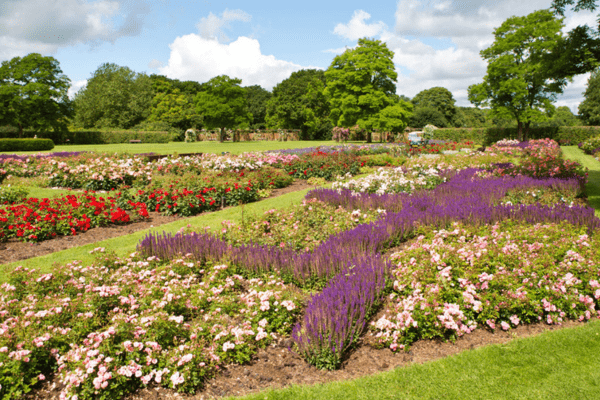
Located in the Valby district, Valbyparken is the largest park in Copenhagen, covering 64 hectares filled with greenery and character. The park sits on land that once served as a city landfill during the early 1900s.
It was transformed into a public park in the late 1930s, and despite damage during World War II, it was fully restored and expanded in the following decade. Today, it is a protected area and one of the city’s most cherished green spaces.
When Copenhagen was named the European City of Culture, 17 themed gardens were added to Valbyparken, giving the park a unique and colorful identity.
In summer, the gardens burst into life, offering visitors a flowery retreat unlike any other in the city. One of the standout features is the Rose Garden, where over 12,000 rose bushes bloom in rich shades of red, pink, and yellow. Each garden has its personality, from fragrant herb beds to playful sensory spaces designed for all ages.
The Botanical Garden: A Living Library of Plants
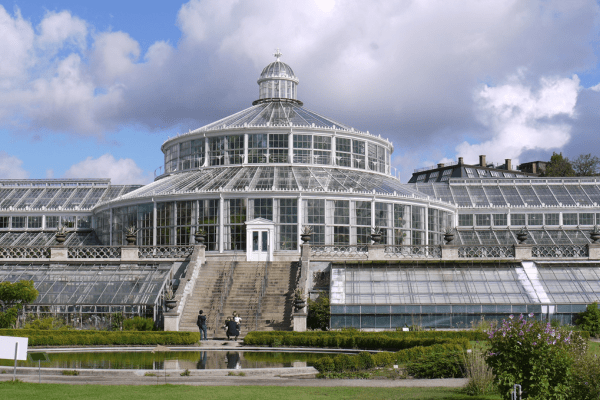
In the center of Copenhagen, the Botanical Garden stands as both a public attraction and a scientific space. The garden has roots dating back to the early 1600s, though it has stood at its current location since 1870. Today, it plays a vital role in research, conservation, and education. Managed by the University of Copenhagen, the garden houses more than thirteen thousand plant species.
Spread across ten hectares, the garden features several specialized sections. There is a large Rock Garden, where alpine plants grow among stones and sloped beds. A dedicated Rhododendron Garden bursts into bloom in late spring, while the Perennial Garden offers vibrant flowers all summer long.
The lake area supports aquatic plants, and nearby beds display plants arranged by geographic origin, from Arctic mosses to Mediterranean herbs. You will also find an extensive collection of Danish wild plants, showcasing the country’s natural botanical heritage.
One of the highlights of the garden is the Butterfly House. In summer, it opens its doors to a warm, tropical world filled with exotic butterflies. As you step inside, the air becomes humid and still. Butterflies glide gently through the space, landing on leaves, flowers, and sometimes even curious visitors.
The enclosed habitat is rich with tropical plants, creating a complete ecosystem where butterflies can feed, rest, and display their natural behaviors. It offers a close-up experience that feels both magical and educational, especially for children and first-time visitors.
Nearby, the historic Palm House draws attention with its elegant glass structure. Built in 1874, it was inspired by London’s Crystal Palace and remains one of the garden’s most photographed features.
Inside, tall palms and rare tropical trees reach toward the ceiling, surrounded by narrow walkways and iron staircases that allow visitors to explore from above. All in all, the Botanical Garden is a peaceful haven for anyone curious about the plant world.
Tivoli Gardens: Where Flowers and Fantasy Meet
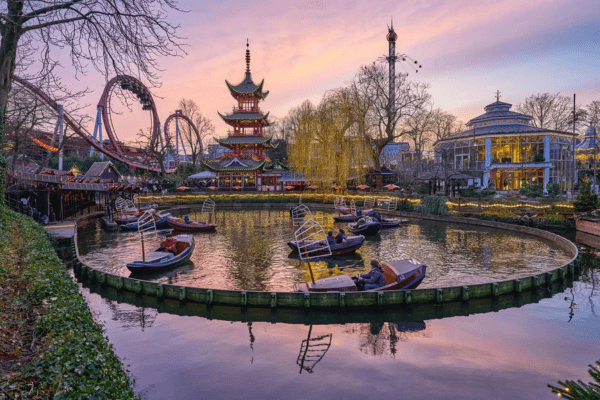
Tivoli Gardens is one of the most iconic places in Copenhagen. It first opened in 1843, making it one of the oldest amusement parks in the world still in operation today. Built to delight both locals and visitors, it has been a beloved part of the city’s culture for over a century.
Though often thought of only as an amusement park, Tivoli also features stunning garden design that comes alive in the summer months. Flower beds bloom with colorful dahlias, peonies, and marigolds, creating beautiful displays throughout the park. Shaded tree paths offer calm walks, while flower arches invite visitors to stop and take photos.
The gardens are carefully arranged to match Tivoli’s playful and magical style. In the evening, they light up with lanterns and soft lighting that creates a dreamy atmosphere. Tivoli is ideal for visitors who want a mix of fun and floral charm all in one place.
Østre Anlæg: A Quiet Park with Artistic Roots

Behind the National Gallery of Denmark is Østre Anlæg, a peaceful park shaped from old city defenses. In the late 1800s, the land was transformed from Copenhagen’s former fortification area into a public park designed by landscape architect H.A. Flindt.
His vision was to create a romantic English-style garden, and that influence can still be felt today. Unlike the formal design of some gardens, Østre Anlæg has a natural and relaxed feel. Winding paths lead visitors through shaded areas, grassy open spaces, and around a quiet lake where swans and ducks glide past blooming lilies.
This park is especially beautiful in summer when wildflowers add bursts of color to the open areas. The scent of maple leaves fills the air as people sit by the water or stroll along paths bordered by trees. It is a perfect place for visitors who enjoy combining nature and art, as many choose to rest here after exploring nearby museums.
Landbohøjskolens Have: A Garden of Learning and Peace
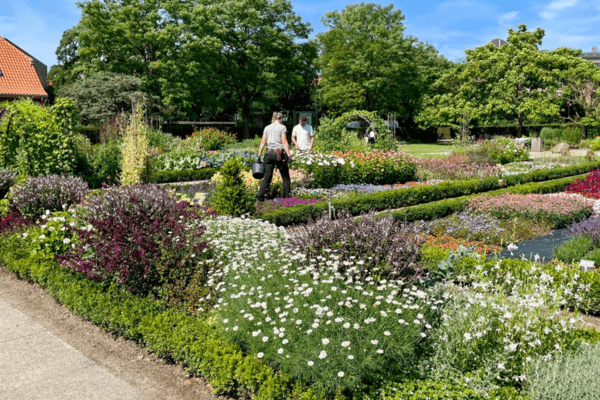
In the Frederiksberg area, you will find Landbohøjskolens Have, also known as the Horticultural Garden. This lesser known space is part of the University of Copenhagen and was created to teach students about gardening and plant science. Today, it is open to the public and offers a calm, beautiful space for anyone to enjoy.
The garden features a large variety of trees and plants. Flowering cherry trees, chestnut trees, and soft green lawns make the area feel like a secret retreat in the middle of the city.
A small pond reflects the surrounding trees, while blooming irises and lilies add a splash of color around its edge. Few tourists know about this spot, which makes it especially peaceful. Locals come here to read, walk, or just enjoy the quiet sounds of nature.
Frederiksberg Garden: A Royal Landscape in the Heart of the City

Frederiksberg Garden is one of the most romantic and beautifully designed green spaces in Copenhagen. Located beside Frederiksberg Palace and close to the city zoo, this historic garden invites you to slow down and take in its elegant charm. Originally laid out in the 18th century in the style of English landscape gardens, Frederiksberg Garden still feels like a royal escape from everyday life.
Summer in Frederiksberg Garden brings flowering trees, lush greenery, and peaceful corners that are perfect for a quiet rest. A calm lake runs through the center, where visitors can rent small boats and glide along the water past swans and ducks. Locals love to sit near the Chinese Pavilion, an ornate structure built in 1803 that adds an exotic touch to the landscape.
Although the garden has a peaceful atmosphere, there is plenty to explore. Children enjoy watching animals at the nearby zoo, especially since parts of the elephant enclosure can be seen from inside the park. Couples often take romantic walks near the lakeside paths, while photographers capture the soft golden light that filters through the tall trees.
Conclusion
The gardens of Copenhagen are a celebration of nature and community. During summer, they become peaceful spaces filled with flowers, shade, and life. Each garden offers something unique. Fælledparken is full of energy and tradition, while Valbyparken invites you to wander through themed flower areas. The Botanical Garden brings together plant science and natural beauty, and Tivoli Gardens mixes floral charm with joy and entertainment.
For quieter experiences, Østre Anlæg gives you peaceful lakeside paths close to museums. Landbohøjskolens Have is a hidden place of calm, and Frederiksberg Garden offers elegance and royal history in a natural setting.
To truly experience these gardens with insight and ease, consider joining a Copenhagen private tour with Amitylux. These tours are led by expert local guides who share stories, history, and hidden spots that many visitors miss. The groups are small, so the experience feels personal and special. It is a relaxed, comfortable way to explore the green heart of the city.
And if you are spending your summer days in Copenhagen, you might also enjoy our blog about the best rooftops in Copenhagen. After a day in the garden, there is nothing better than watching the sunset from above with a view over the city!
Frequently Asked Questions
Late May to early August is the best time to visit, as most gardens show their full beauty during these months.
Yes, most parks and gardens in Copenhagen are free for everyone. Some attractions, like the Butterfly House or Tivoli Gardens, charge a fee.
Yes, dogs are welcome in most public gardens. Just remember to keep them on a leash and follow local rules posted at each entrance.

